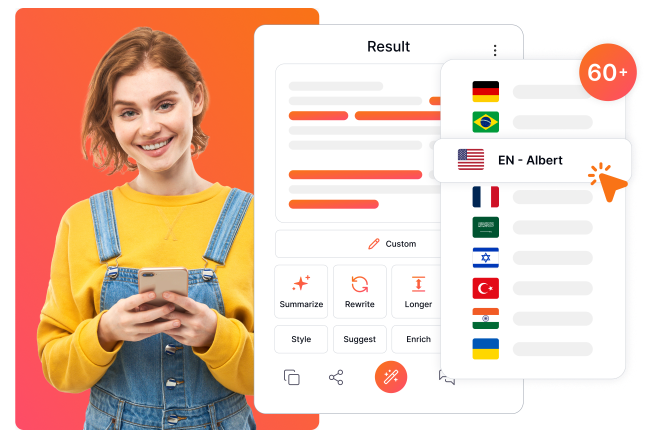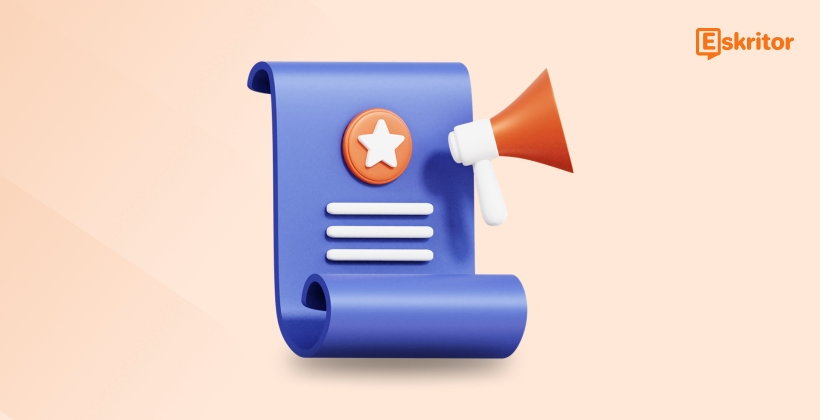The Future of AI Writing Technology Explained
The Future of AI Writing Technology Explained
Blog Article
Why AI Editing is Revolutionizing Proofreading
Synthetic intelligence (AI) publishing engineering has developed rapidly within the last decade, reshaping the way in which we create and communicate with written content. From syntax modification methods to AI-generated books, the number of choices seem limitless. But wherever exactly is this technology heading? Let's investigate the innovations, challenges, and possible future of AI writer.

How AI Writing Engineering Works Today
At their primary, AI publishing technology relies on Normal Language Handling (NLP) and unit learning. These systems permit designs to know, make, and improve individual language. Tools accessible today do well at responsibilities like:
1. Content Development
AI has reached a place where it could make total website posts, social media marketing sayings, and actually information articles. Some models are capable of mimicking human writing variations so effectively that unique between AI- and human-written material is becoming increasingly difficult.
2. Grammar and Type Recommendation
AI-powered publishing assistants don't only check always for grammar and spelling errors; they also offer suggestions to boost tone, understanding, and sentence structure, making complex writing available to an extensive audience.
3. Message Analysis
AI may evaluate the psychological tone of a piece, enabling businesses to determine how their communications will resonate with readers. This is particularly useful in advertising and client interaction.
The Current Tendencies in AI Publishing Technology
Many trends are shaping another phase of AI-powered publishing instruments:
• Personalization
AI publishing technology is increasingly capable of tailoring material to personal preferences. Types can conform to a user's writing fashion, ensuring the productivity thinks authentic.
• Multilingual Capabilities
Several AI resources are increasing their international reach by providing increased interpretation functions and support for multiple languages.
• Improved Research Characteristics
AI resources now possess the capability to analyze large amounts of information and provide fact-checked, well-researched writing in seconds, simplifying the method for specialists in industries like legislation, finance, and journalism.
What the Potential Supports for AI Publishing Engineering
1. Improved Imagination
While recent AI is good at generating content, its imagination continues to be limited to styles within its education data. Future AI isn't only estimated to help but to create unique, useful performs that challenge individual imagination.
2. Easy Venture
Envision an AI that works along with you in real-time, finishing your phrases, completing live edits, and also brainstorming ideas. AI publishing resources may possibly shortly become co-authors, enabling creativity to movement uninterrupted.
3. Honest and Accessible Design
With growing issue about plagiarism, misinformation, and opinion, developers work toward more translucent AI instruction operations and honest implementation. Future methods will more than likely offer more extensive details and measures to make certain accountability.
Challenges and Criteria
The development of AI writing engineering is not without hurdles, including:
• Ethical Dilemmas

Who owns material produced by AI? How do we assure AI-generated material is not scattering misinformation? These debates stay unresolved.
• Human-AI Stability
Will AI match individual creativity or entirely change particular roles? Several authors and musicians be worried about their relevance within an AI-driven world.
• Convenience Separate
Not all organizations or parts have identical use of cutting-edge AI methods, raising issues in regards to the affect with this engineering on international inequality.
Changing the Way We Write
AI writing technology remains in their infancy in comparison to its potential. Whether you're students designing documents, a content marketer targeting particular readers, or perhaps a novelist seeking creativity, AI resources can continue steadily to revolutionize the publishing process. Another decade claims breakthroughs that combination individual ingenuity with machine intelligence, developing a future wherever writing is more efficient, available, and impactful than actually before.
Report this page